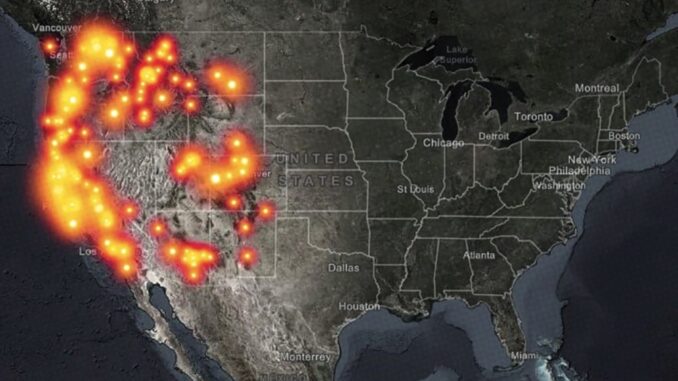
Katherine Whelan ’21
As of 2019, California led the United States in wildfire counts, and unfortunately, they have continued their record into 2020. Beginning in late summer, the number and size of the wildfires in California increased at an alarming rate, especially in Napa, Sonoma, and Shasta Counties. By September 28th, the California state government declared a state of emergency. Tens of millions of people were forced to evacuate their homes, only to see days later that their cars, homes, schools, and towns had been obliterated by the flames. Over 30 residents have died, and many more are injured and missing. With all of these tragedies continuing over the years, one may ask why California has always been the victim of such fiery atrocities.
According to the National Weather Service, most wildfires start when dry lightning strikes hit the ground. Dry lightning occurs in the absence of rain and can be categorized into “positive” or “negative” strikes, which is determined by the “ionic source region of the thunderstorm.” In other words, positive lightning strikes are more likely to start fires. Once the fire starts, winds facilitate the spread through dry air, which is caused by low humidity. Increased levels of dry lightning are not random, however. Experts link most changing environmental factors that cause wildfires, including droughts and higher temperatures as well, to the key contributor: climate change.
However, Jennifer Balch, a fire ecologist at the University of Colorado, Boulder, says that, although climate change is “a big and important part of the story… it is not the only thing going on.” Other fire-inducing factors have come into play this year as well. For example, the El Dorado fire, which is currently burning through 14,478 acres of land, was caused by smoke-generating pyrotechnics from a gender reveal party in El Dorado Ranch Park, Yucaipa. So far, the wildfires have even spread into parts of Oregon and Washington. Yet firefighters and rescue workers continue to work to control the wildfires, keeping the hope of a safer future for California residents alive.